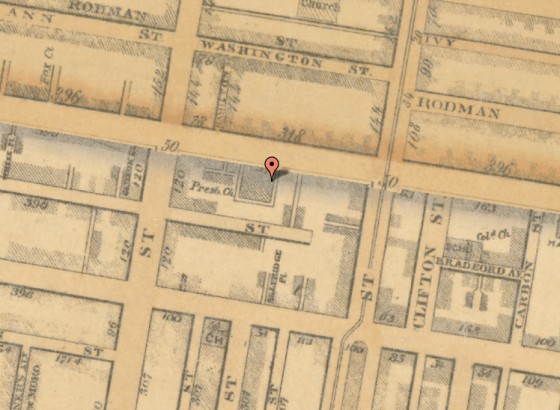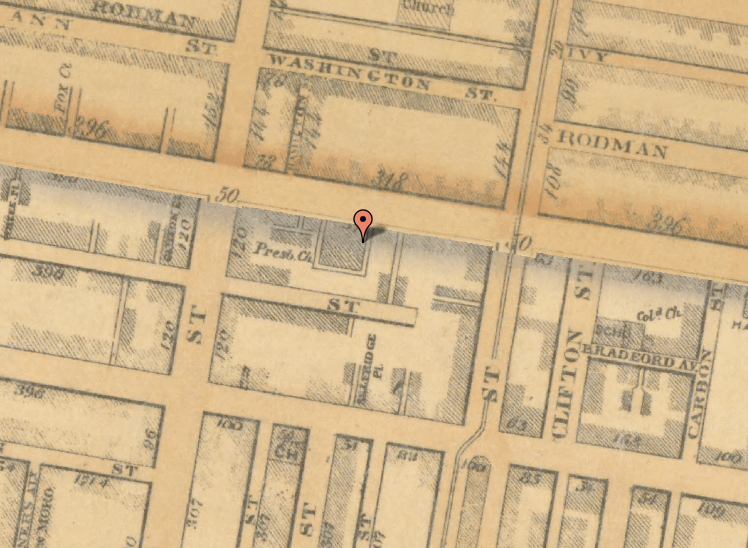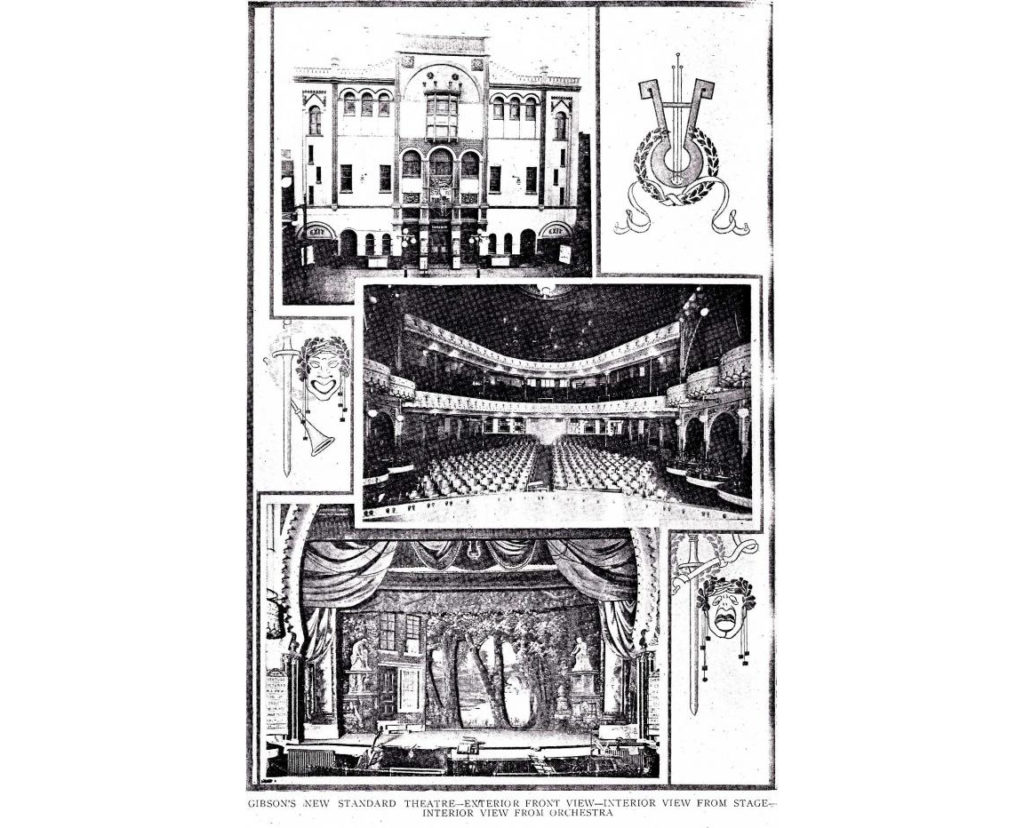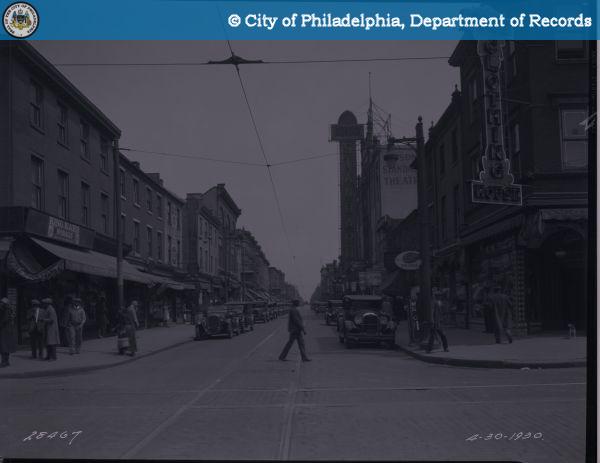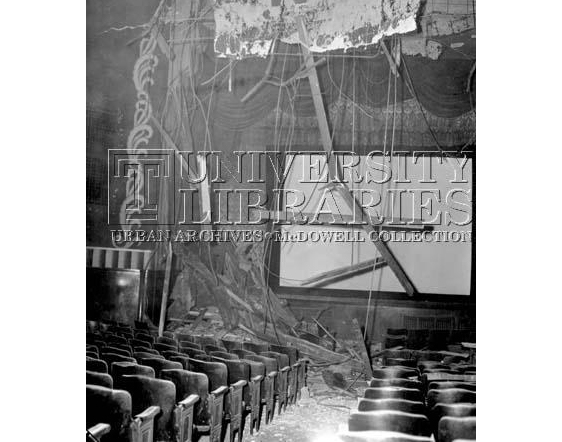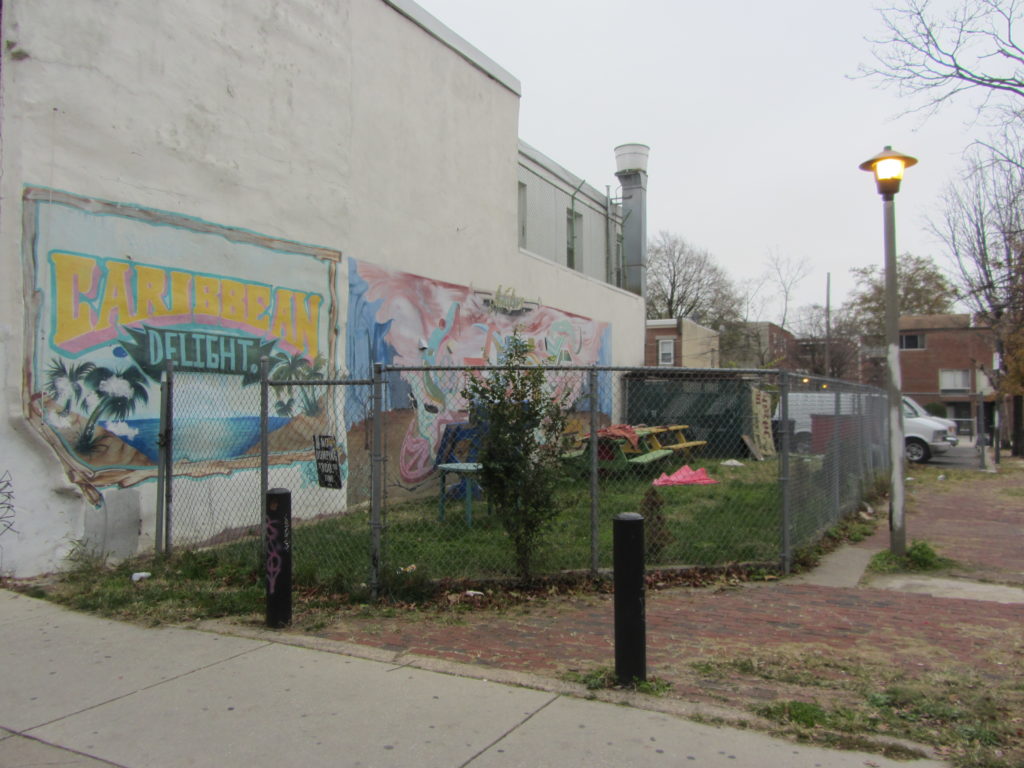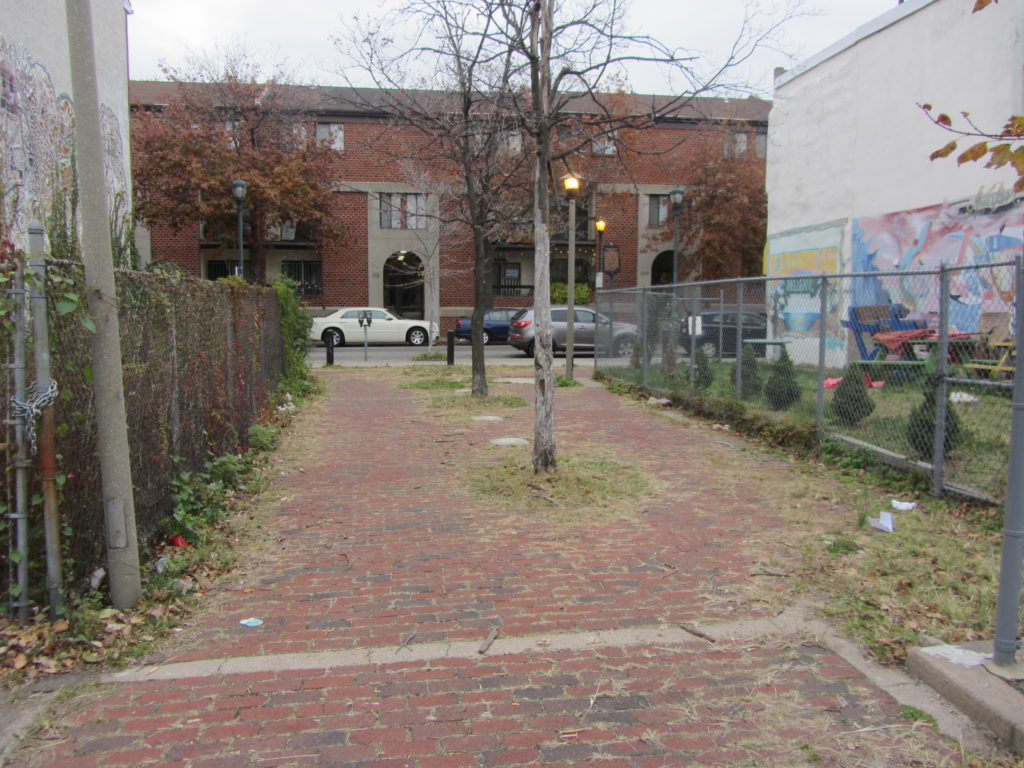Few would guess by looking that the lot now occupied by Caribbean Delight and a wide brick-faced walkway on the 1100 block of South Street was once the site of performances by the early 20th century’s most celebrated African American performers. In the century prior to that, the site was host to Sunday services as the South Street Presbyterian Church. The image here below, taken from Samuel L. Smedley’s 1862 Philadelphia Atlas, shows the church on the south side of the street.
According to Explore PA History, the church was converted into the Standard Theatre in 1888. Little information is available to describe the daily fare at the theatre prior to 1914, when Baltimore native and African American booking agent John Gibson purchased the lot. Gibson’s theatre quickly rose to prominence as one of the premiere ‘black and tan’ clubs in Philadelphia, so named for their multi-racial audiences and black vaudeville performances. Below, 1919 photos taken from Explore PA History show the theatre’s exterior and interior.
The timing of Gibson’s investment appeared fortuitous for a duration. Indeed, according to the Philadelphia Dance History Journal, “no city in America could beat Philly for tap dancing talent in the 1920s and ’30s.” The Standard became a popular dance theatre as well as the site of performances by Jazz Age luminaries like Bessie Smith, Louis Armstrong and Duke Ellington. In fact, Explore PA History tells a story in which the white owner of Harlem’s Cotton Club dispatched local Philly bootleggers to threaten Ellington’s life lest he should fail to cut short an extended run at the Standard and return to New York immediately. Here, in a 1930 photo taken from the Philadelphia Department of Records, the sign for the theatre is visible on the right hand side.
The picture above shows the theatre just on the cusp of closure. Though his ownership of this theatre and several others would allow Gibson to become, at one point, the wealthiest African American in Philadelphia, the Great Depression would bring a reversal of fortune. His considerable investments in real estate having gone sour, Gibson was forced to close the Standard in 1935. Subsequently, the theatre reopened as a movie house, where it remained active for several years more. However, in 1954, Hurricane Hazel hit the region, subjecting the theatre to irreparable damage. The photo below, taken (obviously) from the Temple University Libraries, shows the interior of the Standard Theatre following the storm. As an ultimate consequence of this damage, the theatre was demolished in 1957.
Today, Caribbean Delight and the adjacent empty lot occupy the former address of the Theatre, the former serving as one of the city’s most well-liked purveyors of Jamaican jerk chicken and the latter doing whatever it is that an empty lot does.
–David Tomar

